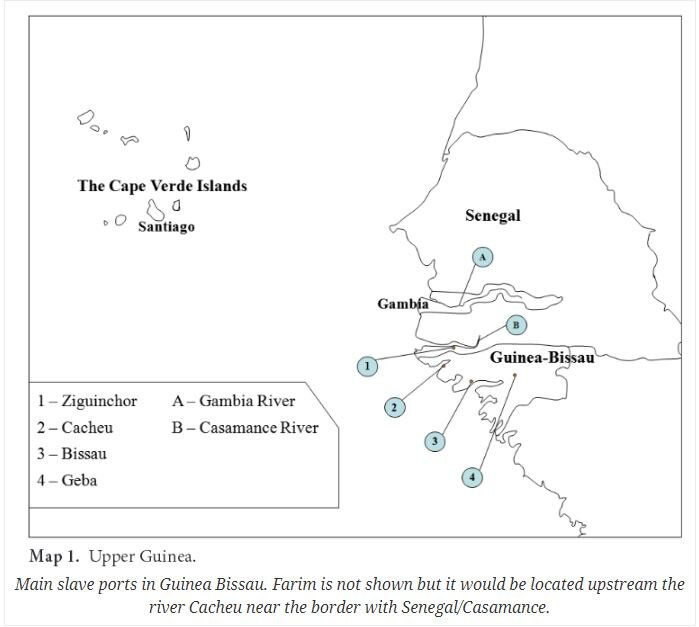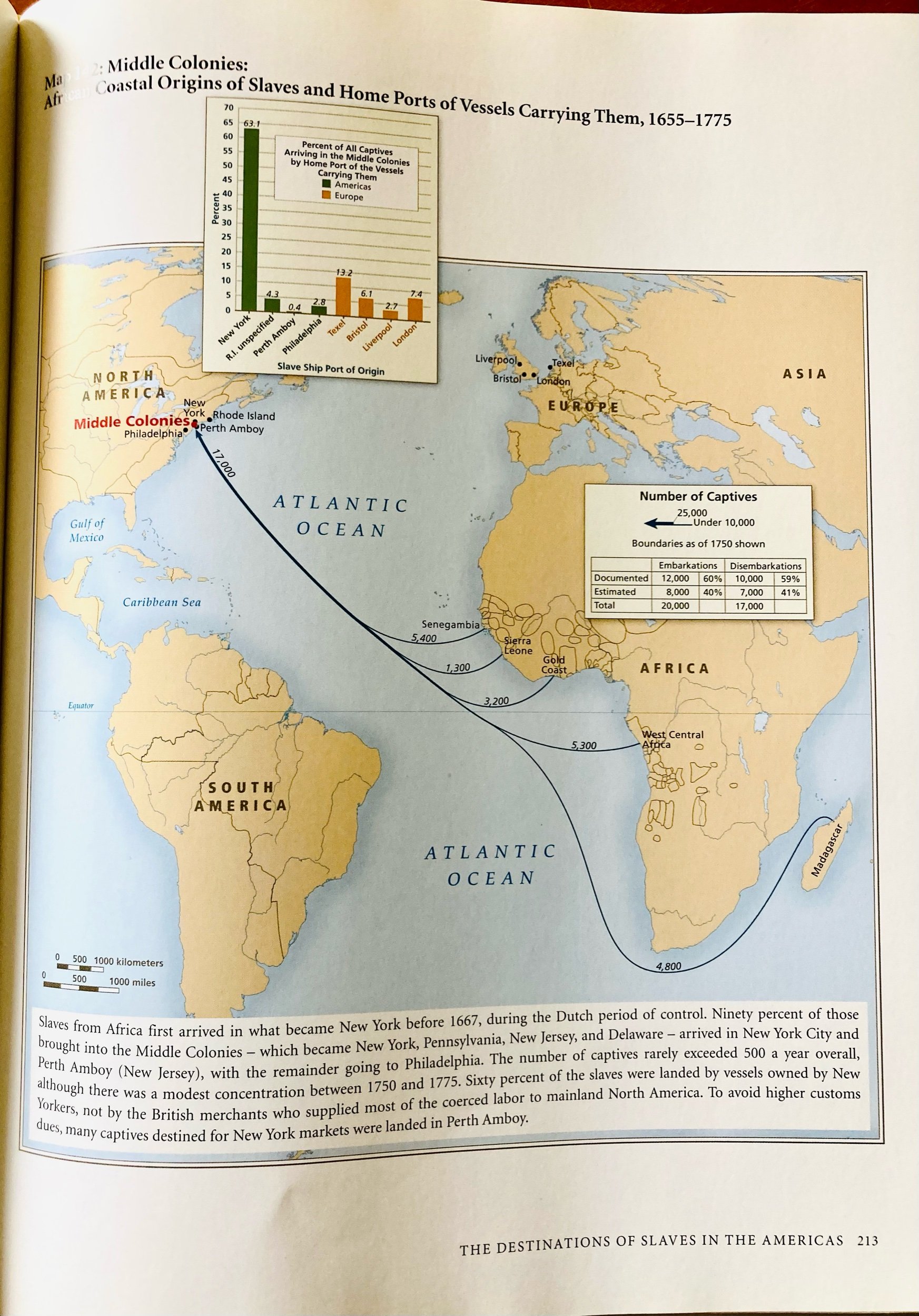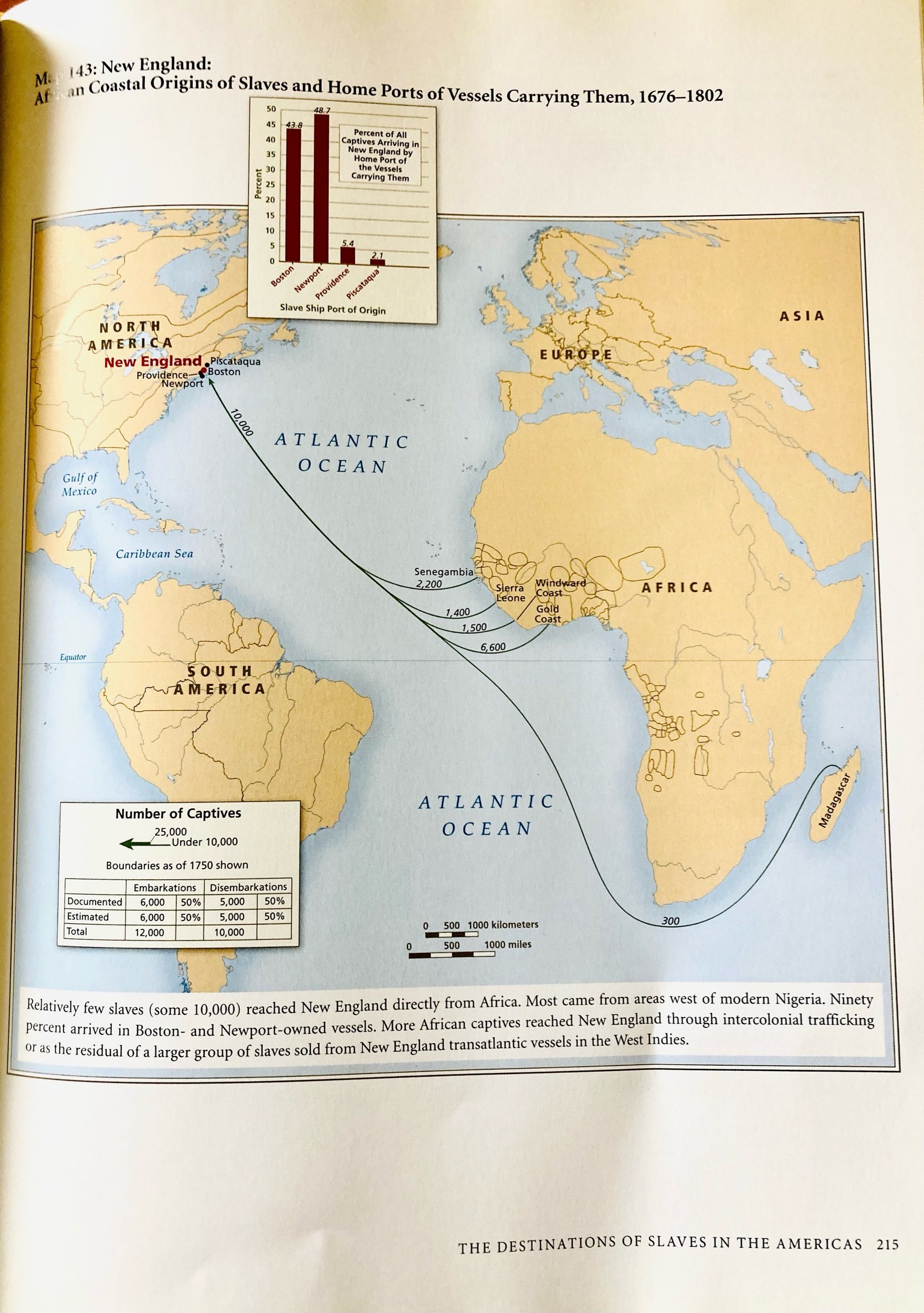From 1668 to 1829, 145,000 people were shipped from the slave trading port at St. Louis, Senegal. From 1668 to 1843, 126,000 people were shipped from the slave trading port of Bissau on the coast of modern day Guinea Bissau, West Africa. These are the lands were Balanta people were living. From these two slave trading ports, 6,400 people were brought to the Gulf Coast, 10,000 people were brought to the port at Charleston, South Carolina, 4,500 people were brought to Chesapeake, and 1,400 people were brought to New York. In addition, 85,800 people were brought to the Islands of the West Indies.
From 1761 to 1815, records show that 6,534 Binham Brassa (Balanta people) were trafficked from their homeland and enslaved in the Americas. That’s an average of at least 121 Balanta per year. If you are a Balanta descendant living in America today, the most likely scenario is that your Balanta ancestor was one of those people.
slave ports in guinea bissau
From Africa to Brazil: Culture Identity, and an Atlantic Slave Trade, 1600-1830 by Walter Hawthorne
Portuguese map from 1544
From Africa to Brazil: Culture Identity, and an Atlantic Slave Trade, 1600-1830 by Walter Hawthorne
Earliest Recorded Balanta enslaved 1510
http://www.cvraiz.com/?page_id=66













